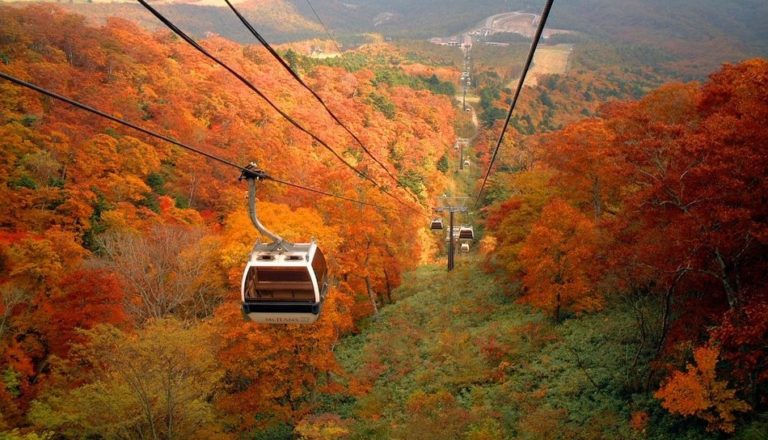The weather and terrain in Japan vary greatly from north to south, so autumn visits different cities at different times. Autumn lasts for three months, but the changing leaves only last for a little over two weeks in each region, with Hokkaido starting the earliest and Kansai the latest.
Mikuni Pass - Hokkaido
Mikuni Pass, part of Daisetsuzan National Park in central Hokkaido, Japan, covers a total area of 226,764 hectares. The pass is located between vast mountains and plateaus, with the highest point reaching 1,139 meters above sea level. In particular, visitors have the opportunity to explore the primeval forest with a diversity of plant species.
Autumn at Mikuni Pass is the most wonderful time of the year, when the trees change color, putting on a new, brilliant coat. In addition, on the pass there is the S-shaped Matsumio Bridge across. The bridge blends with the surrounding grass and trees, creating a harmonious, colorful picture. Coming to Mikuni Pass, visitors can admire the wonderful panorama woven from red leaves and majestic nature.
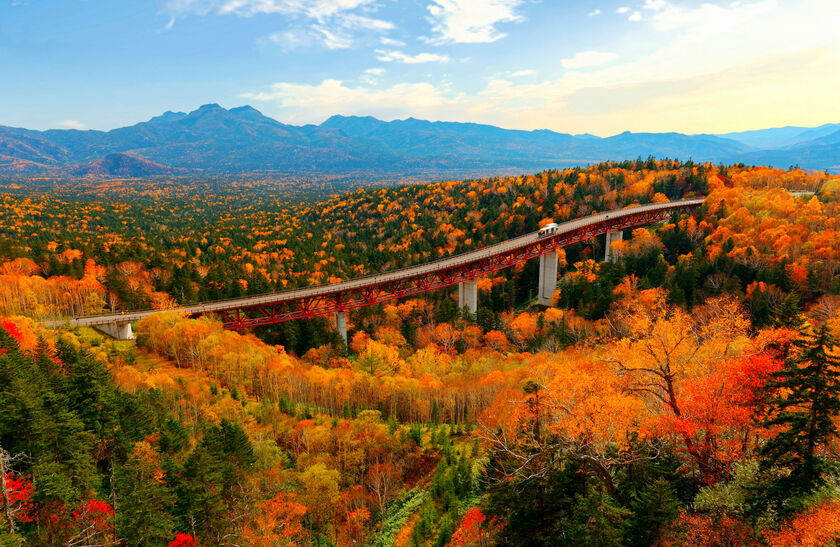
Autumn at Mikuni Pass is a wonderful time, when the trees change color, putting on a brilliant new coat.
Bandai Azuma - Fukushima Route
Fukushima, 200 km north of Tokyo, is famous for its many special features such as samurai culture, historic castles, majestic nature, hot springs and traditional Japanese wine. The Bandai - Azuma route, dubbed the "Arizona of Japan", attracts those who love to drive and enjoy sightseeing. The 28.7 km long journey winds through the Azuma mountain range, connecting with Takayu hot springs and Tsuchiyu pass, with an average altitude of 1350 m, so visitors can both admire the red and yellow leaves of autumn and "cloud hunting" easily.
As one of the first places in Japan to see autumn leaves, the forests along the Bandai-Azuma Highway start to change color from late September to early October. Visitors can choose to enjoy the view from the 80-meter-high Fudosawa Bridge overlooking the valley or enjoy the beautiful view of Fukushima from the parking lot at the bridge.
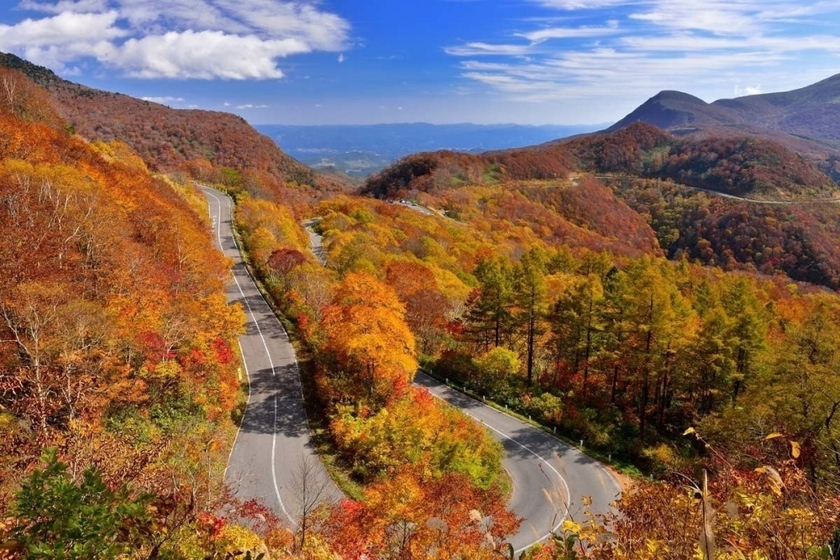
Bandai Azuma Road is like a silk strip in the middle of a red leaf forest.
Rissakuji Temple (Yamadera Temple) - Yamagata Prefecture
With a history of more than 1,100 years, Rissakuji Temple is one of the rare sacred places in the Tohoku region of Japan. This is also the place where the famous haikai poet Matsuo Basho, Edo period (1603 - 1868), composed the famous haiku "Shizukasaya iwani shimiiru seminokoe" (The sound of cicadas permeates the quiet rocky shore). This haiku poem, after more than 300 years, is still widely known throughout Japan.
Every autumn, visitors from all over flock to Rissakuji Temple to admire the beauty of the red leaves. The natural maple, oak and ginkgo trees on the mountainside change color at the same time, creating a very impressive landscape. Along with the natural beauty of autumn, electric lights are also lit in the main hall area and on the red leaves. Rissakuji Temple and the red leaves combine to create a beautiful picture, especially at night, making people truly fascinated.
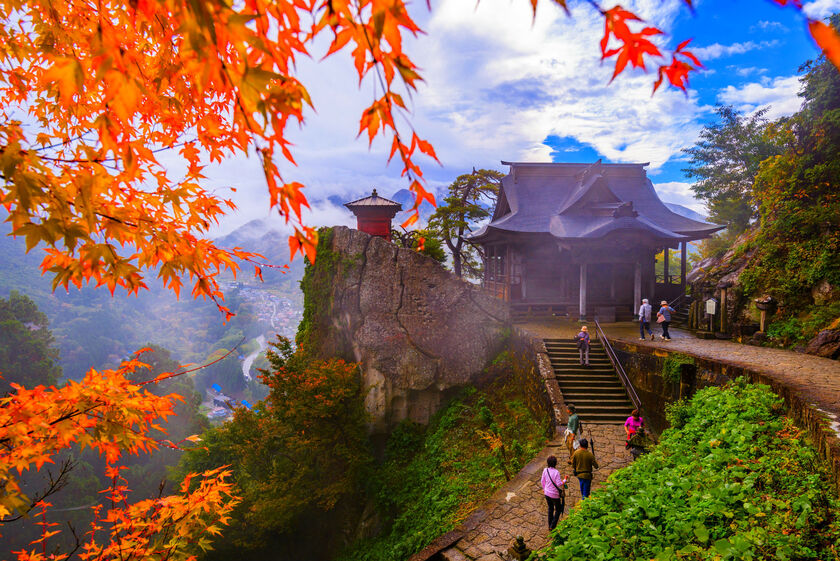
Rissakuji Temple boasts 1,100 years of history and is one of the few sacred places in the Tohoku region.
Lake Towada - Aomori Prefecture - Akita Prefecture
Located on the border between Aomori and Akita prefectures in Japan's Tohoku region, Lake Towada is a caldera lake famous for its steep shores and abundant oak, maple, and rowan trees that change color in the fall.
Except in winter, visitors can take a boat trip on the lake to enjoy the beauty of the autumn leaves from the boat. Nearby is the Oirase Spring, where the clear blue water of Lake Towada flows into. The solemn image of the spring surrounded by colorful trees has made this place the number one autumn leaf spot in the Tohoku region, attracting many visitors to come here to take photos or sketch the scenery.
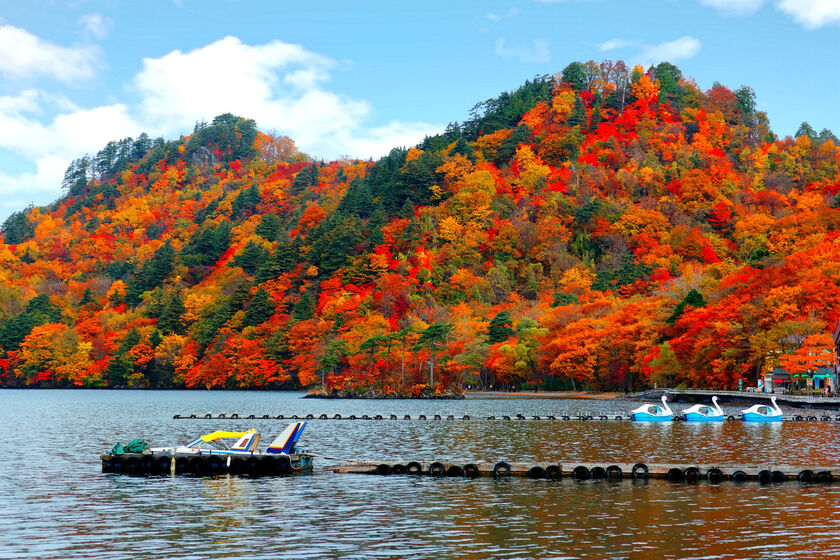
The solemn image of the stream surrounded by colorful trees has made this place one of the top autumn leaf spots in the Tohoku region.
Tokyo
A more popular tourist destination than Tohoku and Hokkaido due to its geographical location is the capital Tokyo. While not as large or spectacular as the Northern National Parks, it is certainly more convenient and has some truly outstanding autumn scenery in its parks and surrounding areas.
Like Gingko Avenue with its rows of yellow gingko trees, Rikugien Park and Koishikawa Korakuen Park are also great places to admire the fall colors of Japan. On the outskirts of Tokyo, the Mt. Takao area is also a popular spot for leaf viewing. The leaves here fall earlier than in the city, so if you come to Japan in mid-October, you can visit here. In general, the best time to see autumn leaves in Tokyo is from late November to early December.
